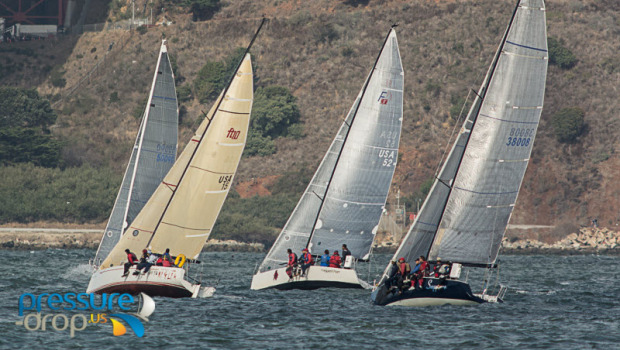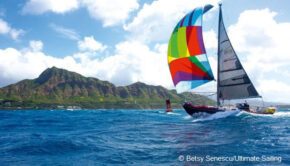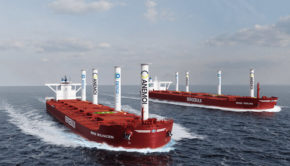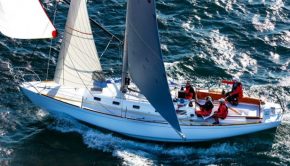Characteristics of a healthy PHRF fleet
Published on December 9th, 2014
Stan Honey has serious cred at the navigation table. He’s won the Volvo Ocean Race and he’s set the fastest circumnavigation record. Now, he’s preparing for line honor assaults on the newly launched 100 foot Super-maxi ‘Comanche’.
But when Stan is home in Northern California, his view on the sport is local, assisting the PHRF fleet with handicapping decisions, a role he has had for 20 years. Here Stan shares some thought on managing the health of PHRF racing…
It is important for local handicap committee members to be active racers too. Knowing how well each boat is prepared, and how well it is raced, are key determinants in evaluating a boat’s PHRF rating. The baseline most committees follow is to rate boats assuming that they have good sails, a clean bottom, and are well-sailed. You can’t credit a boat’s rating for being poorly prepared. . Most PHRF committees try not to rate the sailors, specifically they try to avoid giving a boat a rating credit for not sailing well. Of course some yacht clubs do have a “golf” type handicap for the sailors which can be terrific to encourage participation. When used, a “golf” type handicap is typically an additional factor added to the base PHRF rating.
In a healthy PHRF fleet, the racers develop the impression that the best place to invest their time and money is in their sails, a good bottom, and in improving their sailing skill. Having people focus on their sails, boat prep, and skill through practice leads to a fairly healthy racing environment and an enjoyable experience for most folks.
One of the things that can make a fleet less healthy and present a challenge to the local PHRF committee, is when some competitors regularly make changes to customize their boat for specific upcoming races, such as re-rating with a longer pole for a downwind race or with a smaller jib for a typically windy race. Some boats have even tried to get a rating with a reef in. When this type of “gaming your rating” works, it sends an unfortunate message to other members of the fleet that you need to play this game in order to win, and few want to invest their time this way. To many, investing energy in this “gaming” seems like a distraction from sailing. When competitors make these sort of optimizing changes, the PHRF committee has to rate the change in such a way to communicate that all fleet members do not have to engage in this behavior in order to be competitive.
Another thing that is difficult for a local fleet is when a new boat comes in, particularly a very high performance boat, where the local board is unfamiliar with the boat and thus has no observed performance on which to base a rating. It is discouraging for the fleet if that boat immediately dominates. The fleet will then concluded that you need a racy new boat to win in PHRF, and interest in the fleet will sag. It is also of course discouraging for the owner of the new boat if they are giving an overly punitive rating and they can’t compete. So the PHRF committee has to get the rating close for a new boat, but has zero empirical data to use.
The US Sailing Offshore Office helps with this problem. Most new racing boats will have an ORR rating, and the ORR vpp (velocity prediction program) does a very good job of calculating the performance of a wide variety of boats from measurements. Dan Nowlan in the US Sailing Offshore Office can calculate both a national reference PHRF rating for the boat and also provide other ORR based estimates of the boat’s performance in various conditions. The local PHRF committee can use the national reference PHRF rating to get close, and can also customize this reference rating for their local conditions. These US Sailing Offshore tools are enormously useful to PHRF committees, allowing them to provide a completely unfamiliar boat with a rating that is both fair to the existing fleet and to the new boat. In Northern California, we often advise owners of new high performance boats to get an ORR rating so that we can give them a close PHRF rating right away.
This situation solves the problem for the owner of the new boat, and for the existing fleet. Instead of sailing for a number of races with a punitive rating, or instead of the fleet getting crushed by a new boat, while the local committee collects empirical performance data, the new boat can have a fair rating right away by taking advantage of the ORR vpp.
This allows the local PHRF fleets to enjoy the benefit of low cost ratings with empirical adjustments made by a committee of local sailors, but it also allows the occasional, new, high-performance boat to “parachute” into a local fleet and race with a fair rating.









 We’ll keep your information safe.
We’ll keep your information safe.